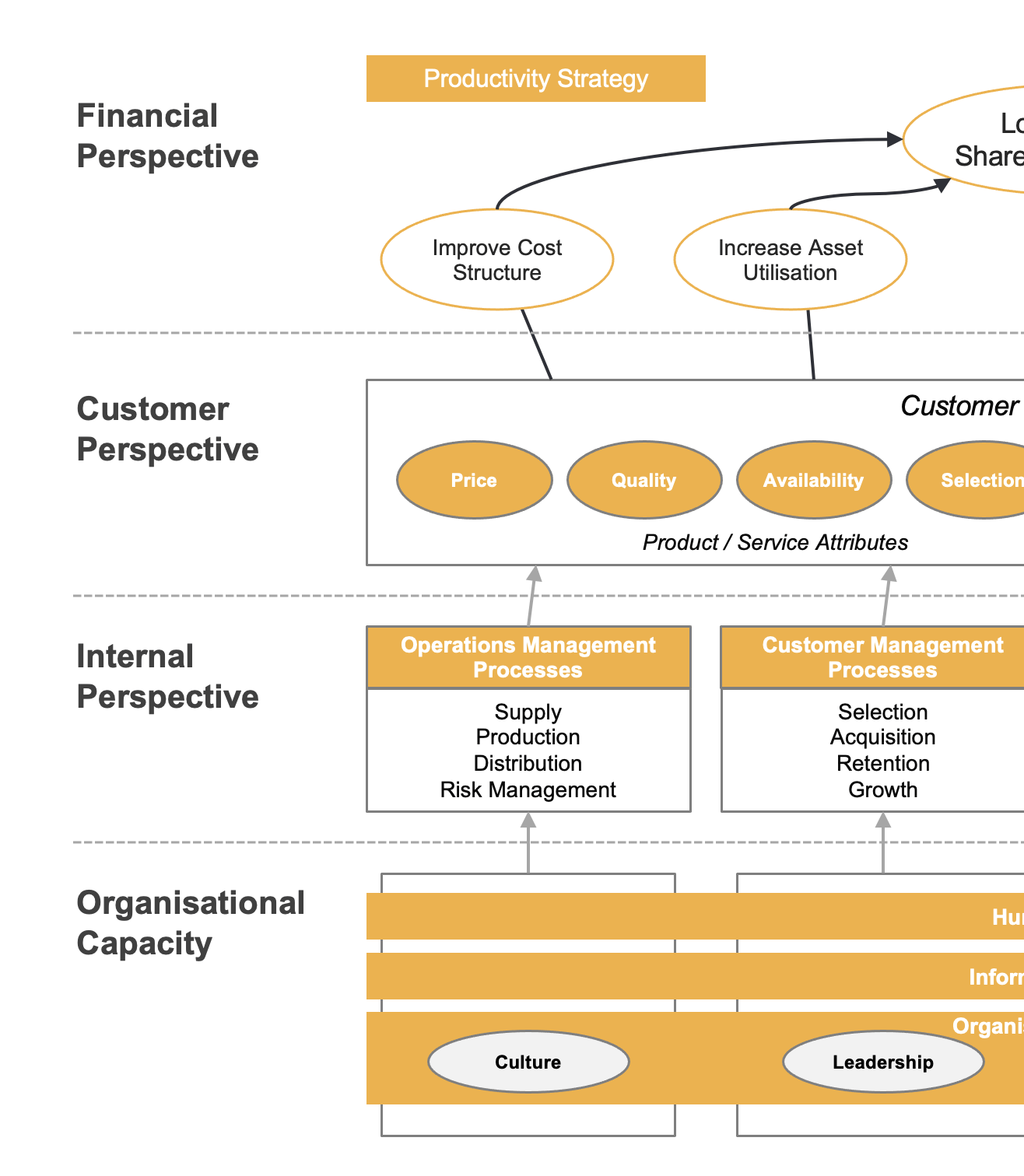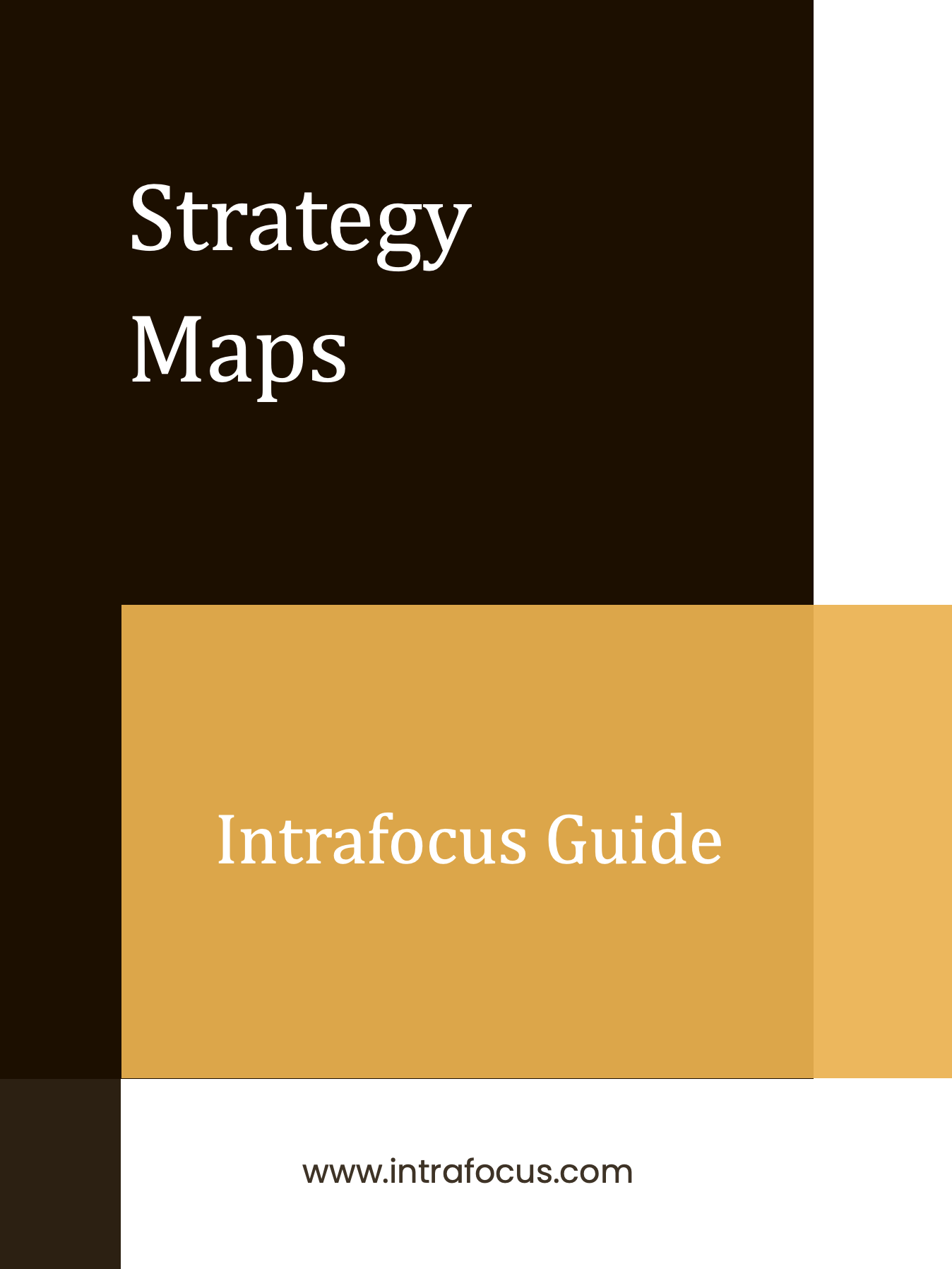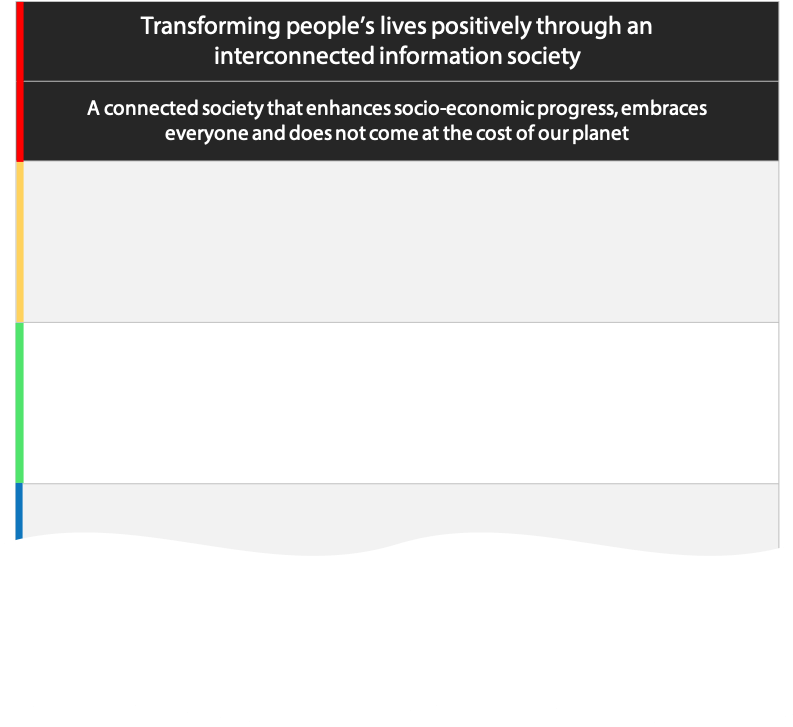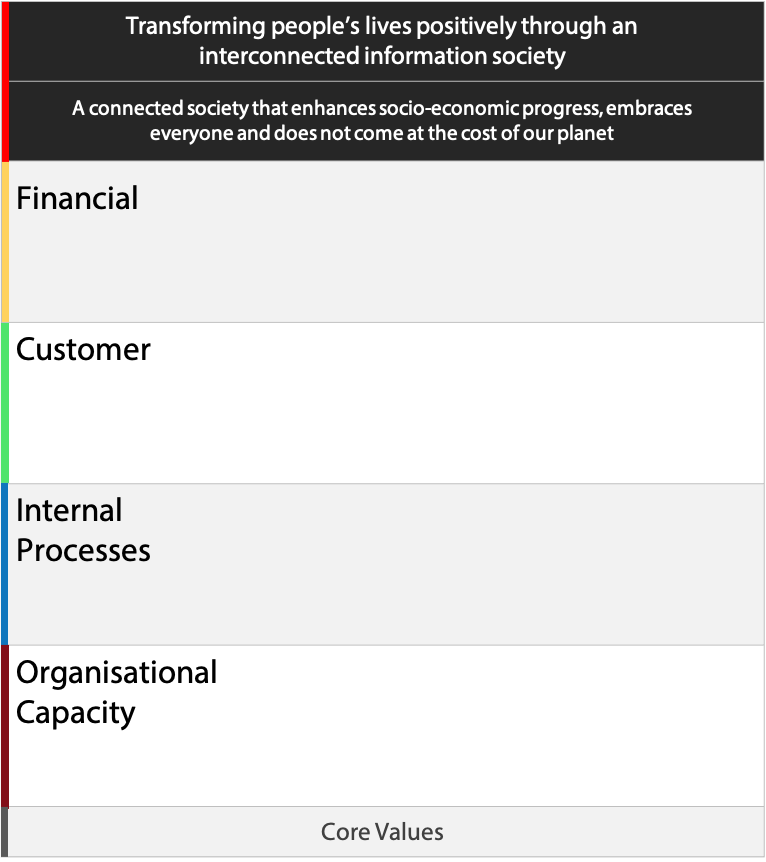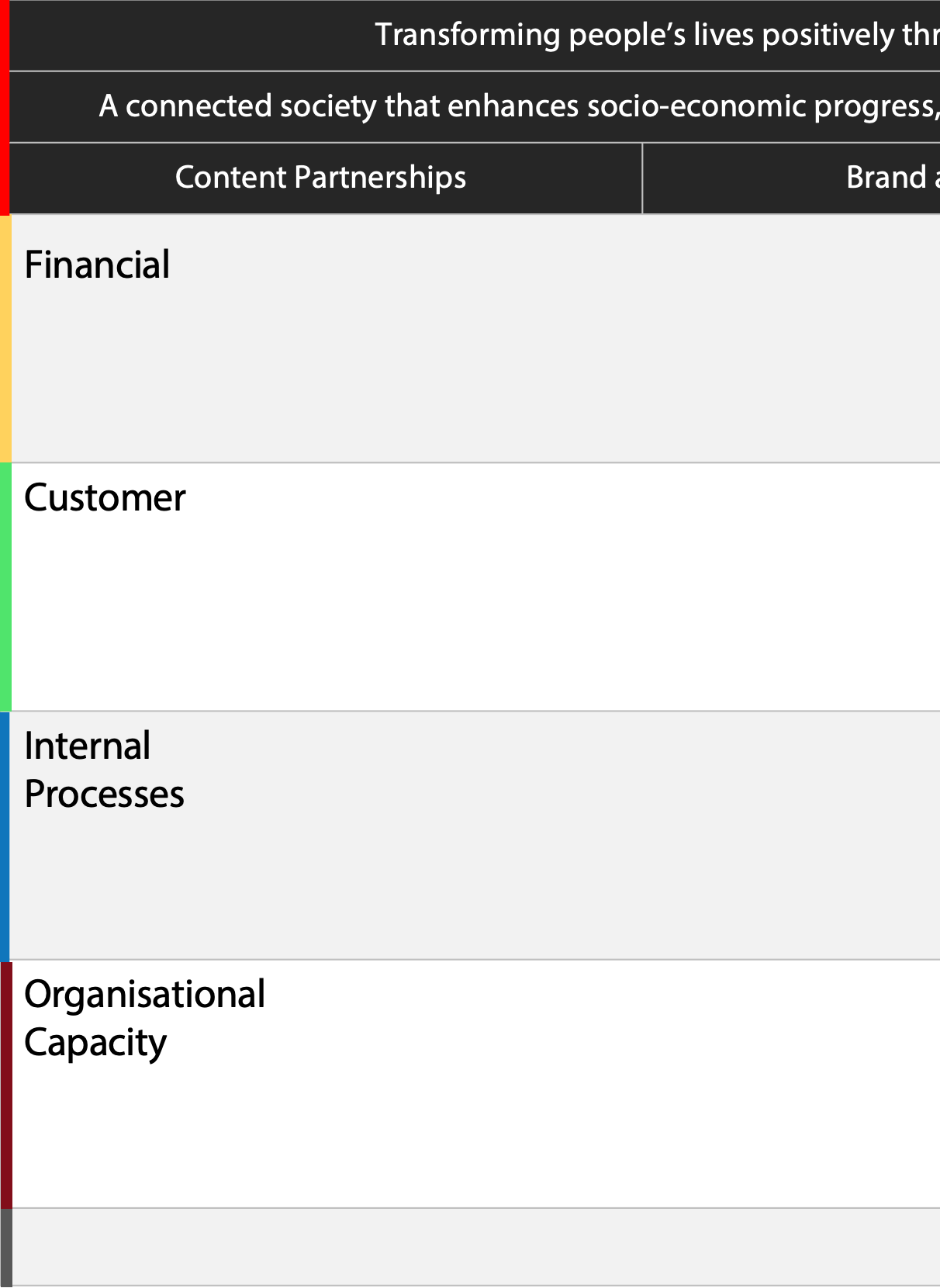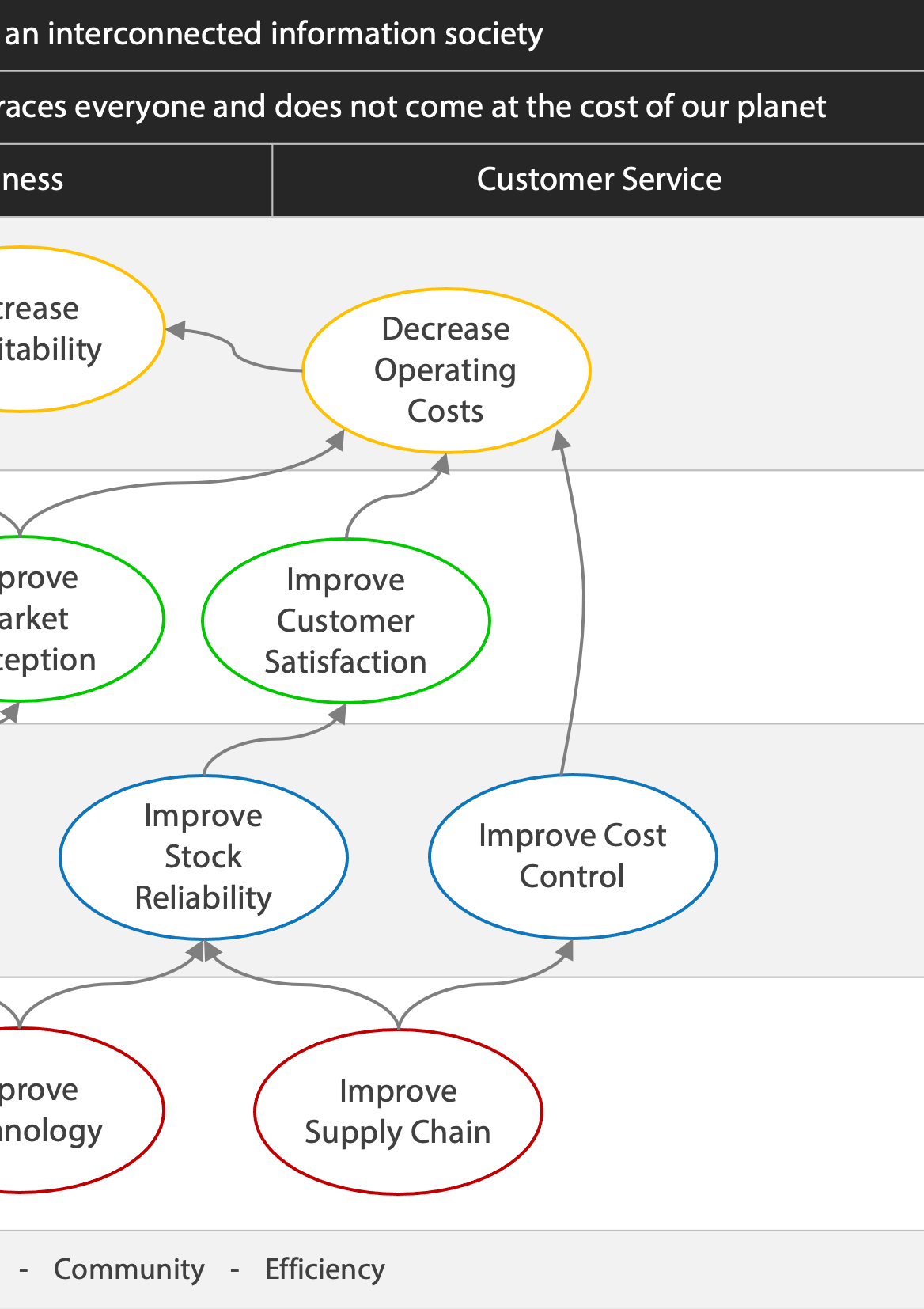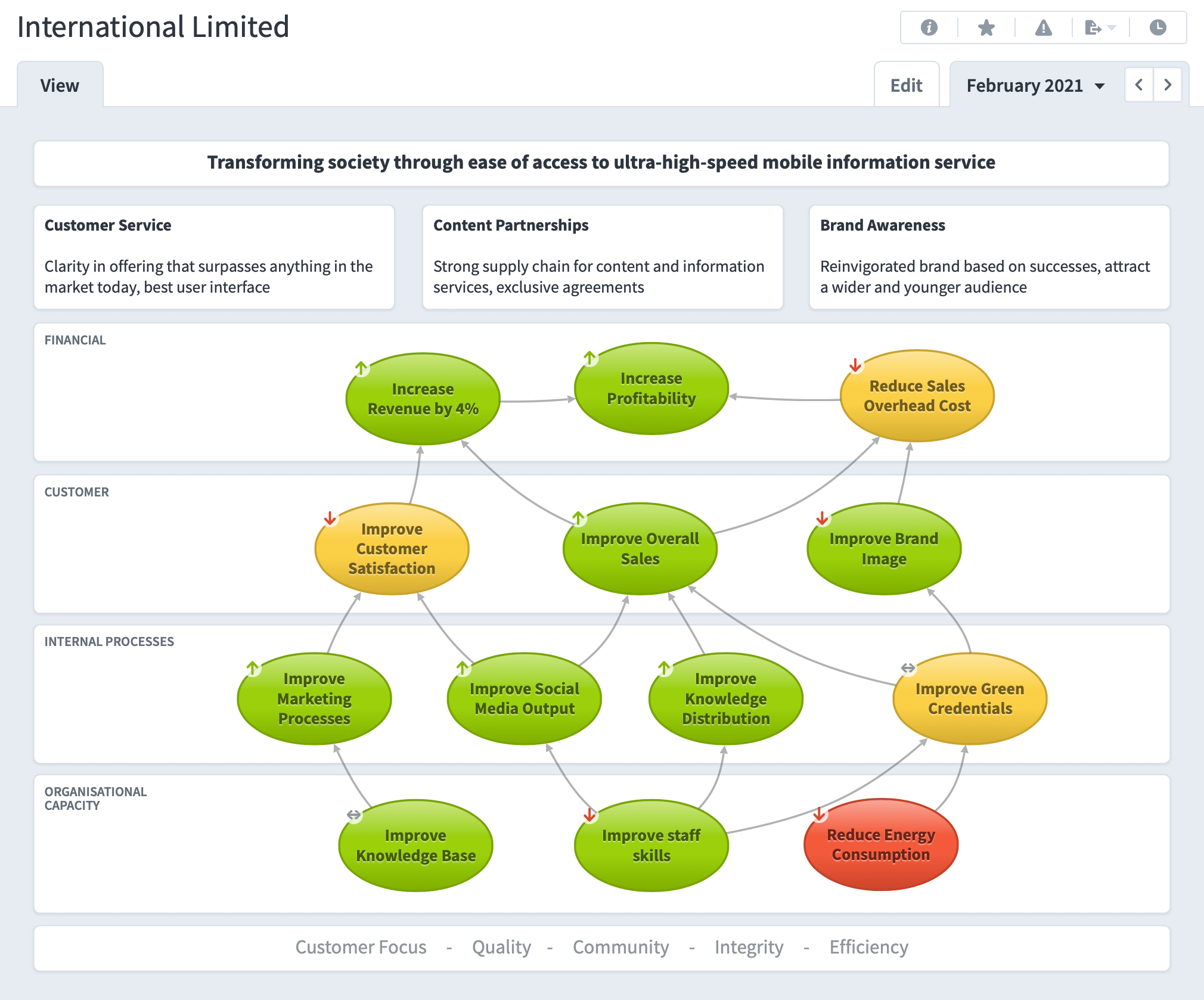What is a Strategy Map?
Strategy Maps – A 2025 Guide with Examples
Definition of a Strategy Map
In 2001 Kaplan and Norton published “The Strategy Focused Organisation” which introduced the Strategy Map as an integral part of the Balanced Scorecard thus transforming it into a strategic management and performance system.
A Strategy Map is a diagram that describes how a company or an organisation can create strategic value. It does this by linking strategic objectives based on the four Balanced Scorecard perspectives: Financial, Customer, Internal Processes and Organisational Capacity. It is usually linked to a ‘scorecard’ that monitors progress towards Strategic Objectives. The scorecard includes metrics, targets and strategic initiatives to drive performance towards achieving a strategic vision.
* Click on the image to reveal the complete strategy map
Check out our PowerPoint templates:
Intrafocus Downloads
Download the Document
A strategy map provides a talking point, something that everyone can look at, examine and relate to. In an instant, a communication vehicle for your strategy has been created.
At a time when budgets must be managed carefully, the Map provides the means to identify exactly where strategic funding should be applied for the best results.
The Reason
How to build strategy maps
A Strategy Map cannot be created without a Vision and Purpose statement. Traditionally, this used to be a Vision and Mission statement. However, in recent years, the use of Vision and Purpose has become an imperative.
Vision describes what a company or organisation aims to do over the next three, five or ten years. Purpose defines the reason for an organisation’s existence and the journey it is taking.
Vision example: Transforming people’s lives positively through an interconnected information society
Purpose example: We will build a connected society that enhances socio-economic progress, embraces everyone and does not come at the cost of our planet.
Strategy Maps
Perspectives
The link between the Balanced Scorecard and the Strategy Map becomes immediately apparent upon the introduction of the four perspectives. It is this ‘balance’ that has proven to be so successful in the methodology. Relying on financial measures can only take a business so far. While financial measures are essential, they can only measure results, that is, what has happened in the past. They cannot drive a business strategy.
A classic Balanced Scorecard includes four perspectives: Financial, Customer, Internal Processes and Organisational Capacity. The order of the perspectives is important. The ones at the bottom, drive activity at the top.
Set Priorities
Strategic Priorities
Vision and purpose define a strategy at the uppermost level. To implement a strategy, the vision and purpose should be broken down into strategic priorities. An assessment phase needs to be entered into. We recommend looking at three aspects of your business or organisation:
1. Current Situation
There are several ways to look at your current situation, but generally speaking, it will result in looking at your strengths, weaknesses, opportunities and threats. What are you doing well? What are you doing badly? Where could you do more? What’s holding you back?
2. Future View
Your vision and purpose should force you to look at the future. Unfortunately, predicting the future can be very difficult. However, techniques such as asking your team to “place themselves in the future looking back” and imagining where – and how – the business has been immensely successful, can help.
3. Value Proposition
A value proposition is a collection of the most persuasive reasons why your customers, and potential customers, should be interested in your offerings. Examples of the language used in your value proposition might include; use of ethical products, responsive, premium pricing or error-free services.
Finally – Define your Priorities based on the above
Obvjectives
Strategic Objectives
A strategic objective must contribute to the vision, purpose and be part of a strategic priority. Care must be taken to avoid reflecting regular operational activities in the Strategy Map. Remember the Strategy Map is about fulfilling the vision.
The Map should contain critical financial and non-financial objectives, which can be measured and will deliver the vision. Successful strategies keep the number of objectives low. The rule of diminishing returns applies here as well. You should be aiming to have twelve to fifteen strategic objectives.
The key strength of a Strategy Map is the ability to visualise the ‘causal’ relationship between strategic objectives, that is, how one strategic objective exerts influence over another. The influence flows from the bottom of the map to the top. Occasionally, it can flow from side to side, but never from the top to the bottom.
Strategy Maps
A Compete Strategy Map
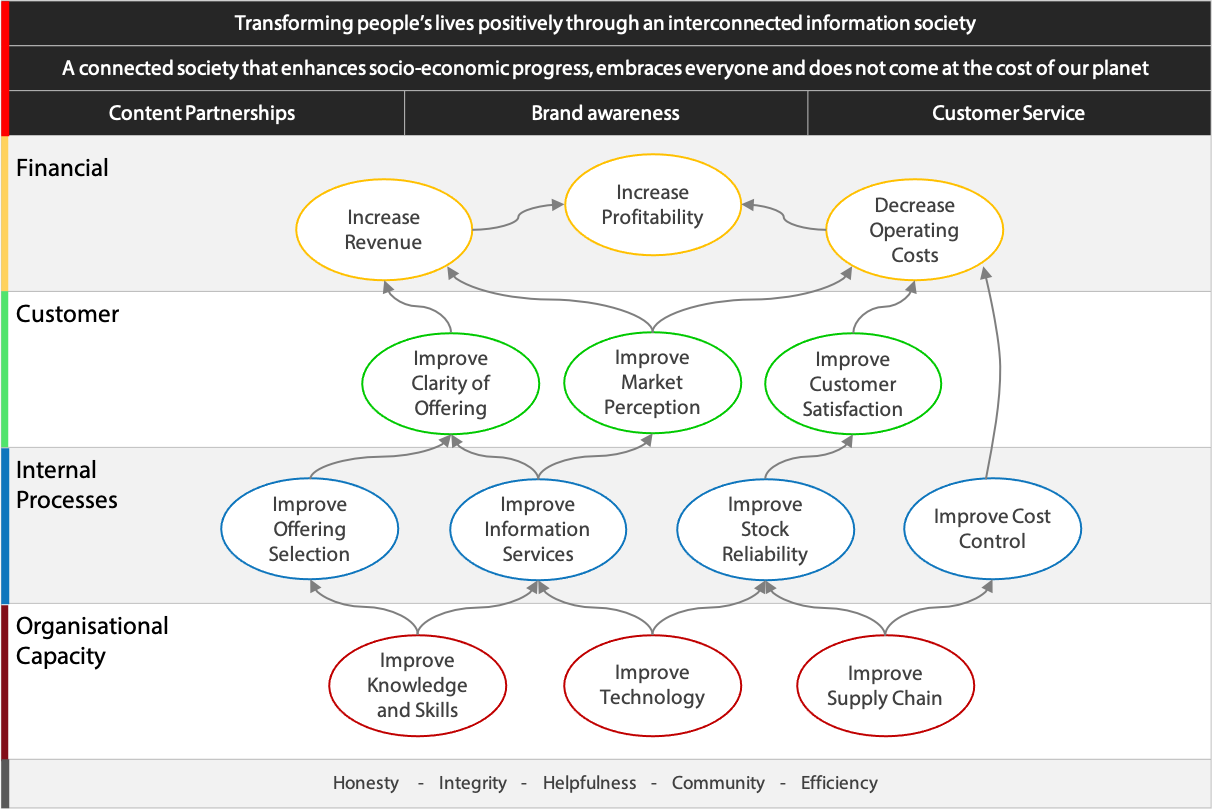
Strategy Maps
What software is available?
The production and management of a Strategy (and a Strategy Map) can be undertaken through the normal management process of reviews and aided by documents, presentations and spreadsheets.
However, over the past few years, several software packages have emerged that not only remove the burden of creating templates but provide the means to create Strategy Maps, collect and track metrics, collate strategic objectives, manage strategic initiatives and generate reports. Most systems also include alerting mechanisms and ensure ownership is assigned.
Some interesting things to note about Strategy Maps generated by software:
- The objectives are colour (R/A/G) coded; this status indicator will change automatically when the metrics associated with the initiatives are updated.
- There are ‘trend’ arrows indicating the status of the objective during the previous reporting period; the software will retain a useful history.
- Each item in the Strategy Map can be ‘clicked’ to take the viewer to the next level of information and usually all the way through to associated metrics, initiatives and reports.
This automated strategic management process can be easily integrated into existing management processes therefore keeping the ‘strategy’ alive and on the executive agenda throughout the business year.
Advanced
The Integrated Strategy Map
A strategy map provides the visual foundation of a business strategy. It is the means by which a business can communicate its strategic plan to employees, customers and stakeholders. As such, it is probably one of the most powerful documents a business can create.
However, a basic strategy map does not link to measures, targets and projects. These things are not usually described on the public view of the strategy map. This can be a mistake. By failing to include this detail, the value of the strategy map is greatly decreased.
It is when the ‘how’ is included with the ‘what’ that the real power of this one-page document reveals itself. The diagram below shows an example of an Integrated Strategy Map. That is, it includes all of the business elements on a single page:
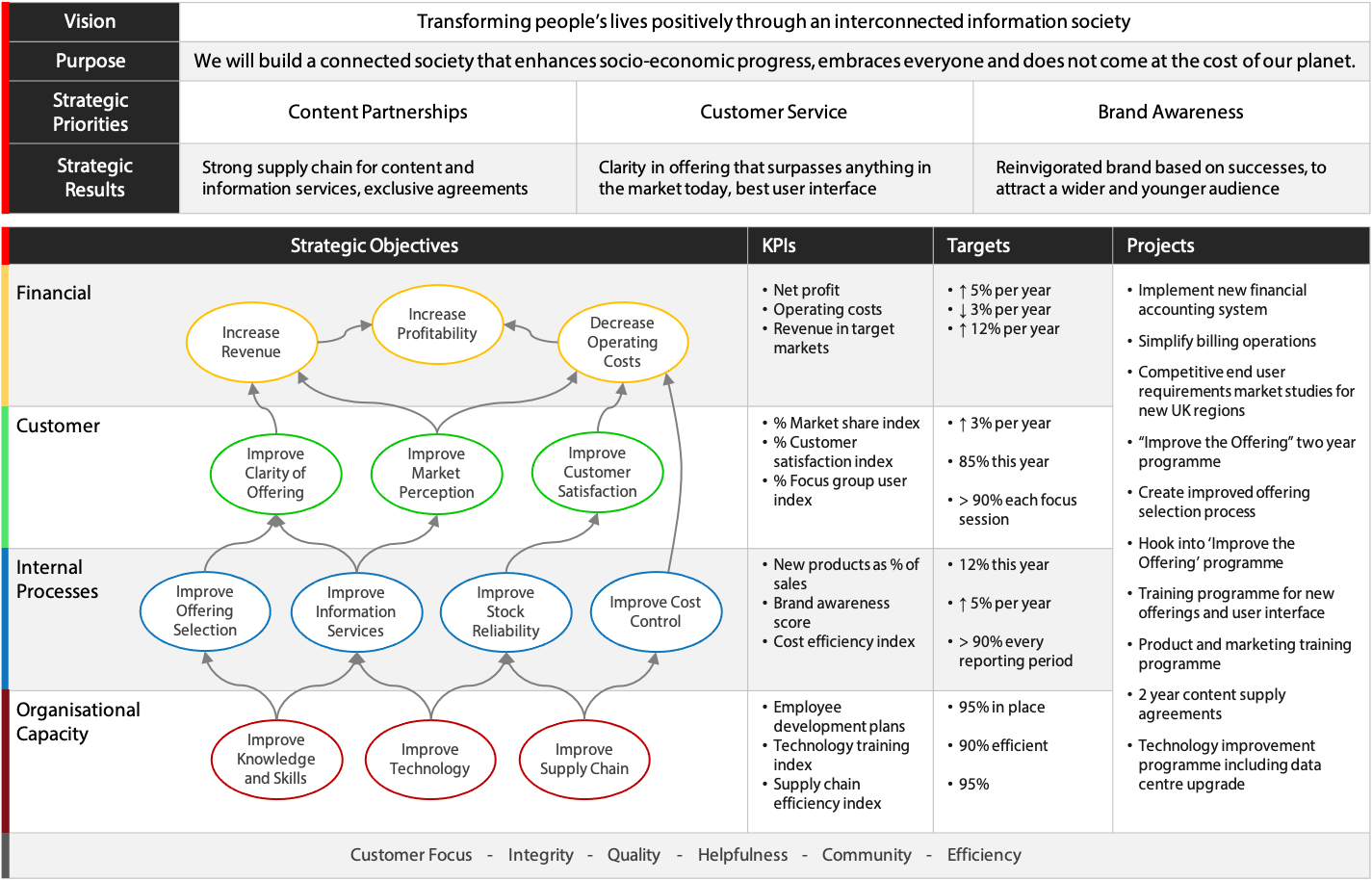
Here we can see, at a glance, not only what the business is trying to achieve, but how it is going to go about it and most importantly how success is going to be measured. This is a very public demonstration of intent can generate a high degree of confidence both internally and externally.
Notice that a set of Core values has been added at the bottom.
A satisfying by-product is that these people involved in the creation of the Integrated Strategy map become fully bought into the process and the strategy.

